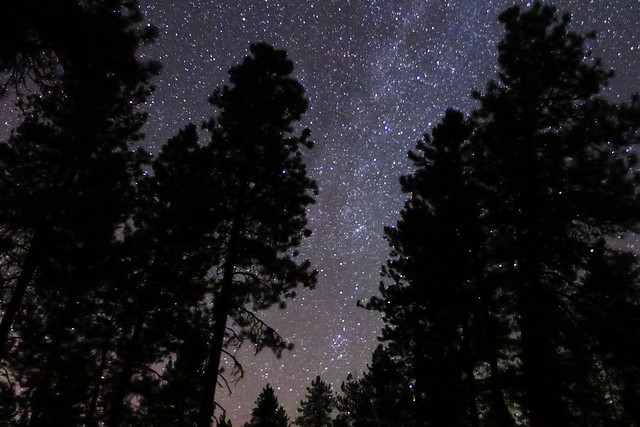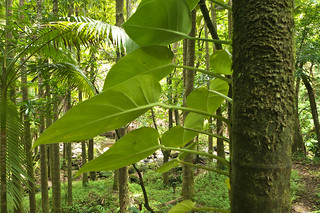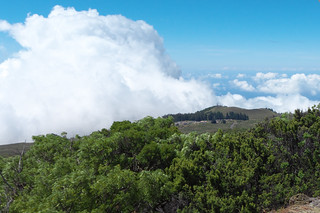Now Dr. Tarico has published an article about my faith story and the
background of Evolving out of Eden, a book I co-authored with
Dr. Robert M. Price about the conflicts between evolutionary science
and Christian theology. Her introduction and questions in the Q&A
that follows were insightful and thought-provoking, and the article is
getting wide exposure on Alternet.org, Salon.com, and the website of
the Richard Dawkins Foundation for Reason and Science. Between them,
the article has nearly 2,000 Facebook “likes” and 300 tweets.
And there are a lot of comments by readers, too. These three links go
to the different editions of the article with their respective sets of
comments:
Alternet,
Salon,
and the
RDFRS. I’ll
get back to those in a minute.
The book is also getting attention from John Loftus’s Debunking
Christianity blog. It is running an
excerpt
that goes into some theological depth about a nuance to the evolution
vs. Christianity conflict, significant but little discussed: How could
the half-human, half-divine nature of Jesus possibly be rationalized
scientifically?
The problems aren’t just scientific: An evolved or even half-evolved
Jesus would’ve had all the supposedly sinful natural inclinations that
Christianity gives humans so much grief about—lust, anger,
etc.—because he carried Mary’s human DNA and a supposedly divine
portion that would have needed to be defective by design in order to
match up with it. Besides all that, there is the issue of divine
deception: Jesus wouldn’t be a man without a Y chromosome faked to
look like it had been passed down, with occasional mutations, from an
endless line of human paternal ancestors. What a mess, and that’s just
from this one small part of the overall problem that makes this book
cover 340 pages and eighteen chapters.
Now, about those comments. I am amazed at how much people will say
based on so little actual information. And I’m not talking about the
silly “I didn’t come from some monkey” or “you weren’t there when the
world was made” nonsense that pervades all public discussion of
evolution in the United States, including in the pages of comments
that follow these articles. That is easily disregarded by anyone who
has honestly read a real science book on the subject. More vexing are
the assumptions people flippantly make about all the solutions to the
Christanity-vs-evolution puzzle that I must have missed, the
sophisticated metaphorical reading of the Bible that muffles its
inconvenient passages into a mystical, benign chant thrumming in the
background.
Hmmm. Perhaps my co-author’s two PhD degrees—one in the New Testament
and the other in systematic theology—provide some counterbalance to
the two Bible courses the commentator says he took in college, if not
some glimmer of understanding about biblical exegesis. Certainly
reading our book, skimming its Table of Contents, or even glancing at
this paragraph from page 9 would address his concerns about our being
trapped in literalism:
Another commentator (“Mike V” on Salon) is concerned that we former
fundamentalists “think that the only legitimate form of religion is
essentially the fundamentalist one. That is why they just can’t grasp
the sophisticated and interesting theologies that are out there. It’s
nice that he actually took the time to even look at [John] Haught, but
his cavalier dismissal of it speaks volumes.” This is another
article-skimmer who I would love to see become an actual reader of the
book. Or perhaps just a glance at our index would help his own
cavalier dismissal of our work: We have twenty separate index
entries for Haught, John, citing his works on about as many
pages. Haught is just at one end of the spectrum of science-savvy
theologians we’ve identified, with, for example, the “evolutionary
creationist” Denis Lamoureux near the other. (He gets 33 index
entries, in case you were curious.)
Most baffling of all are those commentators who think I somehow
co-authored a book subtitled Christian Responses to Evolution
without being aware of, well, Christian responses to evolution. Like
“kenkapkk” on Salon: “But why is Suominen desperately clinging to an
attempt to reconcile creationism with evolution? It’s the THEOLOGY
that’s a mess. Has he taken time to read the plethora of progressive
Christian scholars or studied the evolution of the New Testament as a
literary-historical document that is primarily mythological?”
Uh, yes. Yes, we have. I conclude this posting (below the
update) with a copy of our References section. It’s
in really small print, because there are 180 entries, but you get the idea.
Al-Khalili, Jim.
2004. Quantum: A guide for the perplexed. London: Weidenfeld
and Nicolson.
Alexander, Denis.
2008. Creation or evolution: Do we have to choose? Oxford:
Monarch/Grand Rapids: Kregel.
Aus, Mike. 2012.
Conversion on mount improbable: How evolution challenges Christian
dogma. The Richard Dawkins Foundation for Reason and Science.
richarddawkins.net/articles/645853-conversion-on-mount-improbable-how-evolution-challenges-christian-dogma
(accessed May 2012).
Babinski, Edward
T. Interpretations of biblical cosmology.
etb-cosmology.blogspot.com/2012/03/interpretations-of-biblical-cosmology.html
(accessed June 2012).
———, ed.
2003. Leaving the fold: Testimonies of former fundamentalists.
Amherst, NY: Prometheus Books.
———.
2010. The cosmology of the Bible. In Loftus 2010, loc. 1298-1848.
———.
2012. Personal communication.
Balantekin, A.B.
and N. Takigawa. 1998. Quantum tunneling in nuclear fusion. Rev.
Mod. Phys. 70, 77-100.
Barbour, Ian G.
2000. When science meets religion: Enemies, strangers, or
partners? New York: HarperCollins.
Barr, James. 1977.
Fundamentalism. Philadelphia: Westminster Press.
Beegle, Dewey M.
1963. The inspiration of scripture. Philadelphia: Westminster.
Blackmore, Susan.
1999. The meme machine. Oxford University Press.
———.
2010. Why I no longer believe religion is a virus of the mind.
The Guardian. September 16.
guardian.co.uk/commentisfree/belief/2010/sep/16/why-no-longer-believe-religion-virus-mind
(accessed February 2013).
Blish, James.
1970. Spock must die! New York: Bantam Books.
Bishop, Robert.
2009. Chaos. The Stanford Encyclopedia of Philosophy. Ed.
Edward N. Zalta. plato.stanford.edu/archives/fall2009/entries/chaos
(accessed December 2012).
Boardman, William
W., William W. Boardman (Jr.), Robert Frank Koontz, and Henry Madison
Morris. 1973. Science and creation. N.p.: Creation-Science
Research Center.
Bonhoeffer,
Dietrich. 1962. Letters and papers from prison. Trans.
Reginald H. Fuller. Ed. Eberhard Bethge. New York: Macmillan. (Orig.
German pub. 1951 by Christian Kaiser Verlag.)
Bright, John.
1971. The authority of the Old Testament. Nashville: Abingdon
Press.
Bultmann, Rudolf.
1958. Jesus Christ and mythology. New York: Charles Scribner’s Sons.
———.
1960. This world and the beyond: Marburg sermons.
Trans. Harold Knight. London: Lutterworth Press.
———.
1961. New Testament and mythology. In Kerygma and Myth: A
Theological Debate. Ed. Hans Werner Bartsch, trans. Reginald H.
Fuller, 1 44. New York: Harper & Row Torchbooks.
Burton, Robert A.
2008. On being certain: Believing you are right even when you’re
not. New York: St. Martin’s Press.
Carroll, Sean B.
2005. Endless forms most beautiful: The new science of evo devo.
New York: W.W. Norton & Co.
Collins, C. John.
2011. Did Adam and Eve really exist? Wheaton, IL: Crossway.
Collins, Francis
S. 2006. The language of God: A scientist presents evidence for
belief. New York: Simon & Schuster.
Collins, Robin.
2003. Evolution and original sin. In Miller 2003, 469-501.
Coyne, Jerry.
2009. Why evolution is true. New York: Penguin Books.
———. 2009.
John Haught’s “sophisticated” theology: Evolution is God’s
drama. Why Evolution is True website.
whyevolutionistrue.wordpress.com/2009/12/03/john-haughts-sophisticated-theology-why-evolution-is-really-part-of-gods-plan
(accessed August 2012).
———. 2011.
Making religious virtues from scientific necessities. Why
Evolution is True website.
whyevolutionistrue.wordpress.com/2011/07/17/making-religious-virtues-from-scientific-necessities
(accessed May 2012).
———. 2011.
How big was the human population bottleneck? Another staple of
theology refuted. Why Evolution is True website.
whyevolutionistrue.wordpress.com/2011/09/18/how-big-was-the-human-population-bottleneck-not-anything-close-to-2
(accessed July 2012).
———. 2012.
Science, religion, and society: The problem of evolution in America.
Evolution, doi:10.1111/j.1558-5646.2012.01664.x.
Craig, D.P. and T.
Thirunamachandran. 1998. Molecular quantum electrodynamics.
Mineola, NY: Dover.
Cunningham, George
C. 2010. Decoding the language of God: Can a scientist really be a
believer? Amherst, NY: Prometheus Books.
Cupitt, Don. 1988.
The sea of faith. Cambridge: Cambridge University Press.
Darwin, Charles.
1859. On the origin of species by means of natural selection.
London: Murray.
———. 1888.
The descent of man, and selection in relation to sex. 2nd ed.
London: Murray.
Dawkins, Richard.
2006. The selfish gene: 30th anniversary edition with a new
introduction by the author. New York: Oxford University Press.
———.
2008. The God delusion. New York: Houghton Mifflin.
———.
2009. The greatest show on earth. New York: Simon and
Schuster.
de Waal, Frans.
2002. Evolutionary psychology: The wheat and the chaff. Current
Directions in Psychological Science 2, no. 6 (December): 187-91.
———. 2006.
Primates and philosophers: How morality evolved. Princeton,
NJ: Princeton University Press.
DeBruine, Lisa M.
2002. Facial resemblance enhances trust. Proceedings of the Royal
Society: Biological Sciences 269, no. 1498 (July 7): 1307-12.
Deméré, T.A.,
M.R. McGowen, A. Berta, and J. Gatesy. 2008. Morphological and
molecular evidence for a stepwise evolutionary transition from teeth
to baleen in mysticete whales. Systematic Biology 57:15-37.
Dennett, Daniel C.
1995. Darwin’s dangerous idea: Evolution and the meanings of
life. New York: Simon and Schuster.
———. 2006.
Breaking the spell: Religion as a natural phenomenon. New
York: Penguin Group.
Dillard, Annie.
1974. Pilgrim at Tinker Creek. New York: HarperCollins.
Distin, Kate.
2005. The selfish meme: A critical reassessment. New York:
Cambridge University Press.
Domning, Daryl P.
2001. Evolution, evil and original sin. America: The National
Catholic Weekly. November 12.
americamagazine.org/content/article.cfm?article_id=1205
(accessed June 2012).
Ebeling, Erich.
1915-23. Keilschrifttexte aus Assurreligiösen Inhalts.
Wissenschaftliche Veröffentlichung der deutschen orientgesellschaft
28. Leipzig: C. Hinrichs.
Ehrlich, Paul R.
2000. Human natures: Genes, cultures, and the human prospect.
Washington: Island Press.
Eliade, Mircea.
1969. Yoga: Immortality and freedom. Trans. Willard R. Trask.
Bollingen Series, vol. 61. Princeton: Princeton University Press.
Enns, Peter. 2012.
The evolution of Adam. Grand Rapids, MI: Brazos Press.
Everett, Daniel L.
2008. Don’t sleep, there are snakes: Life and language in the
Amazonian jungle. New York: Pantheon Books.
Fagan, Brian. 2010. Cro-Magnon: How the Ice Age gave birth to the
first modern humans. New York: Bloomsbury Press.
Fairbanks, Arthur, ed. and trans. 1898. The first philosophers of
Greece. London: K. Paul, Trench, Trubner.
Fairbanks, Daniel J. 2007. Relics of Eden: The powerful evidence of
evolution in human DNA. Amherst, NY: Prometheus Books.
Flew, Anthony. 1950. Theology and falsification. Reprinted on The
Unofficial Stephen Jay Gould Archive.
stephenjaygould.org/ctrl/flew_falsification.html (accessed April 2012).
Foley, Jim. 2008. Comparison of all skulls. Fossil Hominids: The
Evidence for Human Evolution. talkorigins.org/faqs/homs/compare.html
(accessed October 2012).
Ford, Kenneth W. 2005. The quantum world: Quantum physics for
everyone. Cambridge, MA: Harvard University Press.
Forster, Lucy, Peter Forster, Sabine Lutz-Bonengel, Horst Willkomm and
Bernd Brinkmannet. 2002. Natural radioactivity and human mitochondrial
DNA Mutations. Proceedings of the National Academy of Sciences 99,
no. 21 (October 15): 13950-13954.
Freud, Sigmund. 1964. The future of an illusion. Trans. W.D. Robson
Scott. Garden City: Doubleday Anchor.
Fry, Iris. 2000. The emergence of life on Earth: A historical and
scientific overview. New Brunswick, NJ: Rutgers University Press.
Gibbons, Ann. 2007. The first human: The race to discover our
earliest ancestors. New York: Random House.
Giberson, Karl W., and Francis S. Collins. 2011. The language of
science and faith. Downers Grove, IL: InterVarsity Press.
Giovannoni, Stephen J., et al. 2005. Genome streamlining in a
cosmopolitan oceanic bacterium. Science 309 (August 19), 1242-45.
Gish, Duane T. 1973. Evolution: The fossils say no! San Diego:
Creation-Life Publishers.
Goren-Inbar, Naama, Nira Alperson, Mordechai E. Kislev, Orit Simchoni,
Yoel Melamed, Adi Ben-Nun, and Ella Werker. 2004. Evidence of hominin
control of fire at Gesher Benot Ya’aqov, Israel. Science, New Series
304, no. 5671 (April 30), 725-27.
Gosse, Philip Henry. 1857. Omphalos: An attempt to untie the
geological knot. London: John van Voorst.
Graves, Leslie, Barbara L. Horan, and Alex Rosenberg. 1999. Is
indeterminism the source of the statistical character of evolutionary
theory? Philosophy of Science 66 no. 1 (March): 140-57.
Graves, Robert. 1960. The Greek Myths. Vol. 1. Baltimore: Penguin
Books.
Haarsma, Loren. 2003. Does science exclude God? Natural law, chance,
miracles, and scientific practice. In Miller 2003, 71-94.
Haarsma, Loren and Terry M. Gray. 2003. Complexity, self-organization,
and design. In Miller 2003, 288-310.
Ham, Ken. 2011. The pope on the big bang. Around the world with Ken
Ham.
blogs.answersingenesis.org/blogs/ken-ham/2011/01/07/the-pope-on-the-big-bang
(accessed May 2012).
———. 2012. Beware of those who want the church to compromise. Around
the World with Ken Ham.
blogs.answersingenesis.org/blogs/ken-ham/2012/07/28/beware-of-those-who-want-the-church-to-compromise
(accessed August 2012).
Harris, Sam. 2005. The end of faith: Religion, terror, and the future
of reason. New York: W.W. Norton & Co.
Haught, John F. 2000. God after Darwin: A theology of evolution.
Boulder, CO: Westview Press.
———. 2009. Darwin, God, and the drama of life. Washington Post,
November 30.
newsweek.washingtonpost.com/onfaith/georgetown/2009/11/darwin_god_and_the_drama_of_life.html
(accessed August 2012).
———. 2010. In Atoms and Eden: Conversations on religion and science,
ed. Steve Paulson, 83-98. New York: Oxford University Press.
———. 2010. Making sense of evolution: Darwin, God, and the drama of
life. Louisville, KY: Westminster John Knox Press.
Hawks, John. 2011. Mailbag: Y chromosome Adam. John Hawks weblog.
johnhawks.net/weblog/mailbag/y-chromosome-adam-2011.html (accessed
July 2012).
Horn, Stephan Otto and Siegfried Wiedenhofer, eds. 2008. Creation and
evolution: A conference with Pope Benedict XVI in Castel
Gandolfo. San Francisco: Ignatius Press.
Hulsbosch, Ansfridus. 1966. God in creation and evolution. Lanham,
MD: Sheed and Ward.
Hurd, James P. 2003. Hominids in the garden? In Miller 2003, 208-33.
Hyers, M. Conrad. 1984. The meaning of creation: Genesis and modern
science. Atlanta: John Knox Press.
Ingersoll, Robert G. [1833-1899]. All cited lectures and interviews
are from The Complete Lectures and Interviews of Robert
G. Ingersoll. Kindle edition.
James, William. 1958. The varieties of religious experience: A study
in human nature. New York: New American Library/Mentor
Books. (Orig. pub. 1902.)
Jaspers, Karl. 1953. The origin and goal of history. Trans. Michael
Bullock. New Haven, CT: Yale University Press.
Kitcher, Philip. 2007. Living with Darwin: Evolution, design, and the
future of faith. New York: Oxford University Press.
Kobe, Donald H. 2004. Luther and Science. Leadership University.
leaderu.com/science/kobe.html (accessed July 2012).
Kolts, Russell. 2011. The compassionate mind approach to managing
your anger. London: Robinson.
Koonin, Eugene V. 2011. The logic of chance: The nature and origin of
biological evolution. Upper Saddle River, NJ: FT Press Science.
Kouwenhoven, Arlette P. 1997. World’s oldest spears. Archeology
Newsbriefs 50, no. 3 (May/June),
archaeology.org/9705/newsbriefs/spears.html (accessed February 2013).
Korsmeyer, Jerry D. 1998. Evolution and Eden: Balancing original sin
and contemporary science. Mahwah, NJ: Paulist Press.
Krauss, Lawrence M. 2012. A universe from nothing: Why there is
something rather than nothing. New York: Free Press.
Kuhn, Thomas S. 1996. The structure of scientific revolutions. 3rd
ed. Chicago: University of Chicago Press.
Lamoureux, Denis O. 2008. Evolutionary creation: A Christian approach
to evolution. Eugene, OR: Wipf & Stock.
Lanz von Liebenfels, Jörg. 2001. Theozoologie: Das Urchristentum neu
Erschlossen. Was lehrt die Bibel wirklich? N.p.: Deutschherrenverlag.
Lévi-Strauss, Claude. 1955. The structural study of myth. Journal of
American Folklore 68, no. 270, 428-44.
Levine, Joseph S. and Kenneth R. Miller. 1991. Biology: Discovering
life. Lexington, MA: D.C. Heath and Company.
Loftus, John W, ed. 2010. The Christian delusion: Why faith fails.
Amherst NY: Prometheus Books.
———. 2011. The end of Christianity. Amherst NY: Prometheus Books.
Lovecraft, H.P. 1926. The call of Cthulhu. The H.P. Lovecraft
archive.hplovecraft.com/writings/texts/fiction/cc.asp (accessed April 2012).
Luper, Steven. 2009. The philosophy of death. Cambridge: Cambridge
University Press.
Luther, Martin. 1535-1536. Lectures on Genesis, Vol. 1. George
V. Schick, trans., 1958. Saint Louis, MO: Concordia Publishing House.
Mark, Joshua J. 2011. Enuma Elish—The Babylonian epic. Ancient
History Encyclopedia. ancient.eu.com/article/225 (accessed January 2013).
McFadden, Johnjoe. 2002. Quantum evolution: How physics’ weirdest
theory explains life’s biggest mystery. New York: W.W. Norton & Co.
Mendez, Fernando L., et al. 2013. An African American paternal lineage
adds an extremely ancient root to the human Y chromosome phylogenetic
tree. The American Journal of Human Genetics 92, no. 3 (February
28): 454-59.
Meyer, Klaus-Dieter. 2005. Zur Stratigraphie des Saale-Glazials in
Niedersachsen und zu Korrelationsversuchen mit Nachbargebieten.
Eiszeitalter und Gegenwart 55, no. 1, 25-42.
Meyer, Marvin, ed. 2007. The Nag Hammadi scriptures. New York:
HarperCollins.
Meyers, Stephen. 1989. A Biblical Cosmology. Th.M. Thesis, Westminster
Theological Seminary.
Miller, Keith B., ed. 2003. Perspectives on an evolving
creation. Grand Rapids, MI: W.B. Eerdmans.
Miller, Kenneth R. 1999. Finding Darwin’s God: A scientist’s search
for common ground between God and evolution. New York: HarperCollins.
Monod, Jacques. 1974. Chance and necessity: An essay on the natural
philosophy of modern biology. Trans. Austryn Wainhouse. London:
Collins Fontana Books.
Mohler, Albert, Jr. 2011. False start? The controversy over Adam and
Eve heats up.
albertmohler.com/2011/08/22/false-start-the-controversy-over-adam-and-eve-heats-up
(accessed May 2012).
Morris, Henry M. 1969. Evolution and the modern
Christian. Phillipsburg, NJ: Presbyterian and Reformed Publishing Co.
Murphy, George L. 2003. Christology, Evolution, and the Cross. In
Miller 2003, 370-89.
Münzel, S.C., F. Seeberger, and W. Hein. 2002. The Geißenklösterle
flute: Discovery, experiments, reconstruction. In Studien zur
Musikarchäologie III; Archäologie früher Klangerzeugung und
Tonordnung; Musikarchäologie in der Ägäis und Anatolien,
eds. E. Hickmann, A.D. Kilmer, R. Eichmann. Orient-Archäologie 10,
107-18. Verlag Marie Leidorf GmbH.
Noll, Mark A., and David Livingstone. 2003. Charles Hodge and
B.B. Warfield on Science, the Bible, Evolution, and Darwinism. In
Miller 2003, 61-71.
Nowak, Martin A. 2012. Why we help. Scientific American, July,
34-39.
Otto, Rudolf. 1924. The idea of the holy: An inquiry into the
non-rational factor in the idea of the divine and its relation to the
rational. Trans. John W. Harvey. London: Oxford University Press.
Paget, James Carleton. 1994. The Epistle of Barnabas. Tübingen: Mohr.
Pittenger, Norman. 1979. The lure of divine love. New York: Pilgrim
Press.
Polkinghorne, John C. 2005. Science and Providence: God’s interaction
with the world. West Conshohocken, PA: Templeton Foundation Press.
Price, Robert M. 1980. The return of the navel: The “Omphalos”
argument in contemporary creationism. Creation Evolution Journal 1,
no. 2, 26-33. As republished at ncse.com/cej/1/2/return-navel
(accessed June 2012).
———. 2006. The reason-driven life. Amherst, NY: Prometheus Books.
———. 2007. Biblical criticism. In The new encyclopedia of unbelief,
ed. Tom Flynn, 123-134. Amherst, NY: Prometheus Books.
———. 2009. Inerrant the wind: The Evangelical crisis of biblical
authority. Amherst, NY: Prometheus Books.
———. 2010. Apex or Ex-Ape? The Humanist, Jan./Feb.
thehumanist.org/january-february-2010/apex-or-ex-ape (accessed July 2012).
———. 2011. Myth in the New Testament. Christian New Age Quarterly
20, no. 1.
Price, Robert M., and Reginald Finley Sr. Heaven and its wonders, and
earth: The world the biblical writers thought they lived in.
infidelguy.com/heaven_sky.htm (accessed May 2012).
Prothero, Donald R. 2007. Evolution: What the fossils say and why it
matters. New York: Columbia University Press.
Ramachandran, V.S. 2011. The tell-tale brain: A neuroscientist’s
quest for what makes us human. New York: W.W. Norton & Co.
Ramm, Bernard L. 1954. The Christian view of science and
scripture. Grand Rapids, MI: W.B. Eerdmans.
Reinikainen, Erkki. 1986. Näin on kirjoitettu (Thus it is
written). Oulu, Finland: Suomen Rauhanyhdistysten
Keskusyhdistys. (Quotations translated by Ed Suominen based an
anonymous English translation.)
Ridley, Matt. 1996. The origins of virtue: Human instincts and the
evolution of cooperation. New York: Penguin Books.
Roach, Jared C., et al. 2010. Analysis of genetic inheritance in a
family quartet by whole-genome sequencing. Science 328 (April 30),
636-39.
Robinson, George L. 1913. Leaders of Israel: A brief history of the
Hebrews. New York: Association Press.
Robson-Brown, Kate. 2011. Hominins. In Evolution: The human story,
ed. Alice Roberts, 56-173. New York: DK Publishing.
Roughgarden, Joan. 2006. Evolution and Christian faith: Reflections
of an evolutionary biologist. Washington: Island Press.
Ruse, Michael. 2000. Can a Darwinian be a Christian? New York:
Cambridge University Press.
———. 2010. Science and spirituality: Making room for faith in the age
of science. New York: Cambridge University Press.
Russell, Robert John. 2003. Special providence and genetic mutation: A
new defense of theistic evolution. In Miller 2003, 335-69.
Schaff, Philip, ed. 1886. Recompiled for Kindle as The collected
works of 46 books by St. Augustine. Amazon Digital Services. Unless
otherwise indicated, source for Augustine: On marriage and
concupiscence (loc. 154472-156915); A treatise on the merits and
forgiveness of sins, and on the baptism of infants
(loc. 167511-170865).
———, ed. 1885. Ante-Nicene fathers. Kindle version: Christian
Classics Ethereal Library. Unless otherwise indicated, source for
Barnabus, Justin Martyr, and Irenaeus (Vol. 1); Tatian, Theophilus,
and Clement of Alexandria (Vol. 2); Tertullian (Vol. 3); Minucius
Felix (Vol. 4).
Schleiermacher, Friedrich. 1958. On religion: Speeches to its
cultured despisers. Translated by John Oman. New York: Harper &
Row Torchbooks.
Scholem, Gershom G. 1941. Seventh Lecture: Isaac Luria and his
school. In Major trends in Jewish mysticism. Jerusalem: Schocken
Publishing House. Reprinted frequently by Schocken Books, New York.
Schroeder, Gerald L. 1997. The science of God: The convergence of
scientific and biblical wisdom. New York: Bantam Doubleday.
Shanahan, Timothy. 2003. The evolutionary indeterminism
thesis. BioScience 53 no. 2 (February): 163-69.
Shingledecker, Charles P. 2013. Personal communication.
Slevin, Peter . 2005. Teachers, scientists vow to fight challenge to
evolution. Washington Post. May 5.
washingtonpost.com/wp-dyn/content/article/2005/05/04/AR2005050402022_2.html
(accessed August 2012).
Sparrow, Giles. Cosmos: A field guide. London: Quercus.
Stamos, David N. 2001. Quantum indeterminism and evolutionary
biology. Philosophy of Science 68 no. 2 (June): 164-84.
Stark, Thom. 2011. The human faces of God. Eugene, OR: Wipf &
Stock.
Stenger, Victor J. 2009. Quantum gods: Creation, chaos, and the
search for cosmic consciousness. Amherst, NY: Prometheus Books.
———. 2011. The fallacy of fine-tuning: Why the universe is not
designed for us. Amherst, NY: Prometheus Books.
Stern, David P. 2005. Quantum tunneling. From stargazers to
starships. phy6.org/stargaze/Q8.htm (accessed December 2012).
Strong, James.
1979. Strong’s exhaustive concordance of the Bible with Greek
and Hebrew dictionaries. N.p.: Royal Publications.
Suomen Rauhanyhdistysten Keskusyhdistys (Finnish Associations of
Peace). Päivämies weekly newspaper, from translations published in
the Laestadian Lutheran Church’s Voice of Zion newspaper unless
indicated otherwise.
Suominen, Edwin A. 2012. An examination of the pearl. Published by
the author (also available at examinationofthepearl.org).
Taylor, Arch B. Jr. 2003. The Bible, and What It Means to Me. In
Babinski 2003, 153-68.
Teilhard de Chardin, Pierre. 1933. Christology and Evolution. In
Christianity and Evolution, trans. René Hague. 1971. N.p.:
Harcourt. (Kindle ed., pub. 2002).
———. 1934. How I believe. In Christianity and Evolution, trans. René
Hague. 1971. N.p.: Harcourt. (Kindle ed., pub. 2002).
The 1000 Genomes Project Consortium. 2010. A map of human genome
variation from population-scale sequencing. Nature 467 (Nov. 28),
1061-73, doi:10.1038/nature09534.
Tillich, Paul. 1958. Dynamics of faith. NY: Harper & Row
Torchbooks.
Velikovsky, Immanuel. 1950. Worlds in collision. Garden City, NY:
Doubleday.
Wade, Nicholas. 2006. Before the dawn: Recovering the lost history of
our ancestors. New York: Penguin Group.
Wellhausen, Julius. 1957. Prolegomena to the history of ancient
Israel. Translated by A. Menzies. Cleveland: World Publishing
Company/Meridian Books.
Wells, Spencer. 2006. Deep ancestry: The landmark DNA quest to
decipher our distant past. Washington D.C.: National Geographic
Society.
Wheless, Joseph. 1926. Is it God’s word? An exposition of the fables
and mythology of the Bible and of the impostures of theology. New
York: Alfred A. Knopf.
White, Andrew Dickson. 1895. History of the warfare of science with
theology in Christendom. Ithaca, NY: Cornell University.
Wilcox, David. 2003. Finding Adam: The genetics of human origins. In
Miller 2003, 234-52.
Wiley, Tatha. 2002. Original sin: Origins, developments, contemporary
meanings. Mahwah, NJ: Paulist Press.
Williams, Sam K. 1975. Jesus’ death as saving event: The background
and origin of a concept. Harvard Dissertations in
Religion 2. Missoula: Scholars Press.
Winston, Robert and Don E. Wilson, eds. 2006. Human. New York: DK
Publishing.
World Health Organization. 2012. Lymphatic filariasis: Fact sheet
no. 102. who.int/mediacentre/factsheets/fs102/en (accessed August 2012).
Wright, J. Edward. 2000. The early history of heaven. New York:
Oxford University Press.
Wright, Robert. 2009. The evolution of God. New York: Little, Brown
and Company.
Young, Stephen. 1989. Wayward genes play the field. New Scientist,
September 9, 49-53.
Zimmer, Carl. 2001. Evolution: The triumph of an idea. New York:
HarperCollins. ———. 2011. A planet of viruses. Chicago: The
University of Chicago Press.














